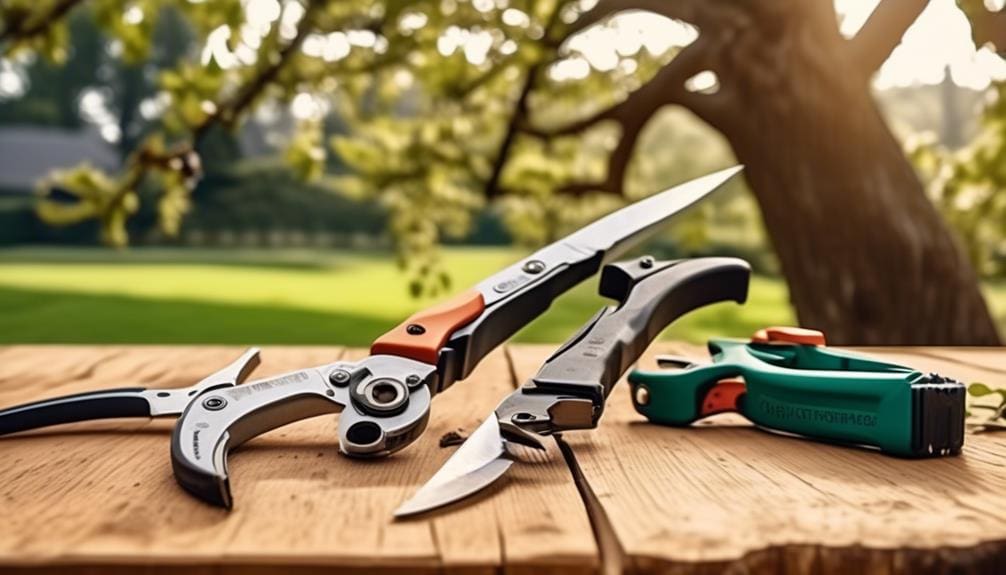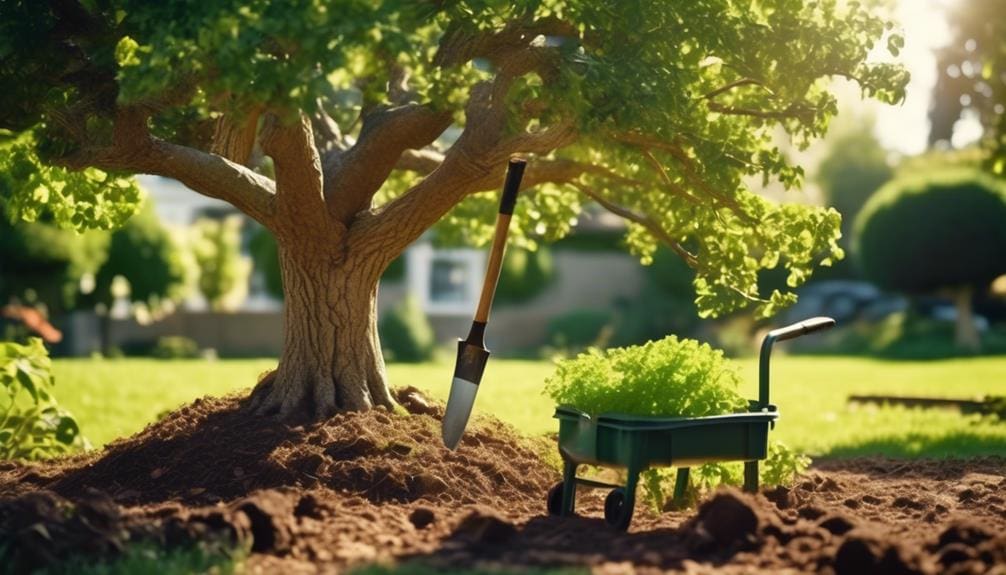Tree Health and Maintenance
Oak Pruning Secrets for Robust Trees
In the silent stillness of ancient forests, the mighty oak stands as a testament to nature’s resilience, yet without our careful intervention, these giants can falter. We’ve learned over time that the art of oak pruning is steeped in secrets that can make the difference between a thriving tree and one that’s merely surviving.
It’s our shared responsibility to wield these secrets wisely, ensuring the robust health of these majestic beings. We’re privy to techniques that not only enhance the aesthetic appeal of oaks but also fortify their very essence against the onslaught of time and elements.
As we discuss the nuances of proper cuts and the elusive timing that accompanies them, we’ll uncover how a few well-placed snips can lead to a lifetime of strength and beauty for these arboreal monarchs. Join us as we explore the symbiotic dance between human touch and nature’s grand design, where every cut and careful decision we make today shapes the legacy of the oaks we cherish tomorrow.
Key Takeaways
- Pruning oak trees promotes healthier foliage and reduces the risk of storm damage.
- Late winter or early spring is the best time for pruning oak trees to minimize stress and prevent disease spread.
- Choosing sharp and clean pruning tools, such as bypass pruners and anvil pruners, ensures clean and precise cuts.
- Following a systematic approach to pruning, including removing dead or dying limbs and maintaining a strong central trunk, helps achieve a balanced crown and structural integrity.
Understanding Oak Tree Biology
To effectively prune an oak tree, it’s crucial to comprehend its biological processes, including growth patterns and response to cuts.
We recognize that tree care isn’t just an aesthetic choice; it’s a scientific endeavor that can significantly influence how trees grow and thrive.
Pruning helps by removing dead or diseased limbs, thus preventing the spread of decay and promoting healthier foliage. It also encourages the tree to develop a strong structure, reducing the risk of damage from storms or heavy winds.
A well-timed cut stimulates the oak to seal off wounds, allocating resources efficiently for robust growth. Our approach ensures that each intervention aligns with the oak’s natural tendencies, fostering its freedom to grow without unnecessary constraints.
Best Season for Pruning
Having established the importance of aligning with oak tree biology for effective pruning, we now focus on the optimal season for this practice, which is during the late winter or early spring, coinciding with the tree’s dormant period.
Pruning in this timeframe allows us to:
- Minimize Stress: Prune a Tree when it’s least vulnerable to stress.
- Prevent Disease: Carry out pruning before the warm, wet conditions of summer months that facilitate disease spread.
- Encourage Growth: Promote robust growth by eliminating competition from dead branches.
- Avoid Growth Interference: Ensure active growth isn’t hindered by timely pruning efforts.
We’re committed to the health of your oaks and believe that timing is crucial. By choosing the dormant season for pruning, we safeguard their vitality, ensuring freedom from disease and stress for a thriving grove.
Selecting Pruning Tools


Selecting the appropriate pruning tools is a critical step in ensuring clean, precise cuts that promote the health and growth of oak trees. We must choose tools that are sharp and clean to make exact cuts, especially when pruning the tree to remove branches that are growing in unwanted directions.
Bypass pruners, ideal for live branches, create a clean cut without crushing tissue, while anvil pruners are better suited for deadwood.
We’ll also consider the size of the branches and select a tool that can cut just outside the branch collar without causing damage. The length and reach of the tool are important for our safety and efficiency.
Regular maintenance, including sharpening of the tools, ensures we’re always ready for the next pruning task.
Step-by-Step Pruning Guide
Embarking on the structural pruning process, we’ll first establish a strong central trunk and balanced crown to enhance the oak’s long-term health and safety.
Here’s how we’ll proceed:
- Identify and Remove: Prune the tree by cutting back dead or dying limbs to prevent decay agents from entering the tree.
- Central Leader: Ensure a dominant central trunk is maintained for structural integrity.
- Branch Spacing: Adjust lateral branches for even spacing, preventing future growth issues.
- Diseased Wood: Excise diseased branches to halt the spread of pathogens.
Encouraging Post-Pruning Growth


After careful pruning, we must ensure the oak tree receives sufficient water and nutrients to foster robust new growth. We’re aiming for the tree to thrive, not just survive.
Proper care includes conducting soil tests to tailor our fertilization strategy, ensuring that we’re not guessing at what the tree needs. By understanding the soil’s nutrient profile, we can adjust our approach, promoting healthier regrowth.
We also focus on the removal of larger branches with precision to avoid unnecessary damage and to stimulate vigorous regrowth. Applying organic mulch conserves soil moisture and supports root development, crucial for the oak’s recovery and expansion.
We’ll monitor the tree closely for stress indicators, ready to respond with adjustments to our care regimen to optimize post-pruning growth.
Conclusion
We’ve explored oak tree biology and the optimal season for pruning. With the right tools, our step-by-step guide ensures effective pruning. Adhering to these techniques bolsters tree health, enhances aesthetics, and prolongs lifespan.
Let’s remember, post-pruning care is crucial for vigorous growth. By combining knowledge with precise action, we’ll cultivate robust oaks, capturing the essence of arboricultural excellence and ensuring these majestic trees thrive for generations.
Always prioritize tree vitality through informed, meticulous practices.


Hello there! I’m Logan Foster, the green-thumbed social media marketer behind the vibrant world of 1800TreeGuy.com. With roots firmly planted in arboriculture, I’ve branched out to help clients cultivate their dream outdoor spaces, one leafy canopy at a time. My knack for nurturing nature is more than a profession—it’s a way of life.
When I’m not talking trees and teaching the art of arboreal care, you can find me cheering on the Bulldogs—my alma mater’s pride and my forever team. My environmental studies there didn’t just teach me about ecosystems; they instilled a lifelong passion for protecting our planet.
Off the clock, I’m an adventurer at heart. Whether it’s trekking the Appalachian trails, pedaling down a mountain path, or crafting guides to share the wonders of the wild, I’m happiest with soil under my nails and the sun on my face. And let’s not forget Yoda, my pug sidekick. He may not have mastered the art of stillness, but his joyful grins are my daily dose of happiness.
I’m all about making connections—between people and the great outdoors and between my clients and their ideal landscape visions. My approach is personal; every tree has a story, and every garden reflects its caretaker.
If you want to green your scene or share in my outdoor escapades, give me a shout on Instagram or Facebook. Let’s cultivate a conversation and grow a community rooted in a love for the lush life.















